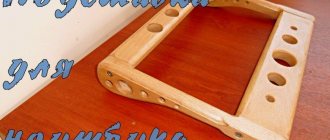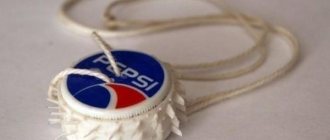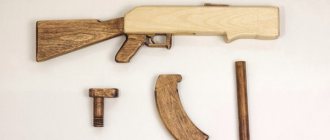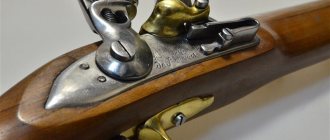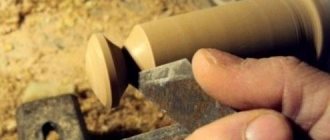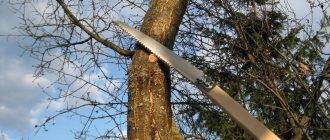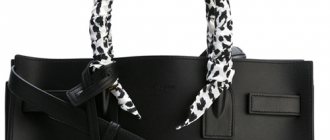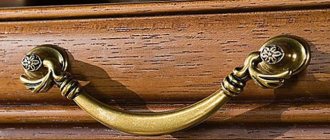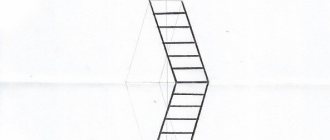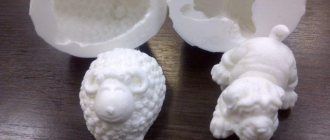Required materials and tools
First, you should take a look around to see what materials you have at home. To recreate a high-quality shooting range, you will need the following materials:
- carbon steel sheets, thickness from 5 mm;
- grinder with attachments;
- welding machine with electrodes;
- rods;
- universal door hinges;
- canvas (for example, foam);
- a can of primer.
A box measuring 100x80x50 (cm) will be assembled from metal sheets. You can use wooden planks, self-tapping screws, a screwdriver, a jigsaw (hacksaw), but then the design will not be reliable. Even if this is not available, you can ask for a regular box at the grocery store.
The manufacturing process of a pneumatic shooting range
The work consists of 3 stages:
- Box assembly;
- Cover assembly;
- Applying primer.
Learn more about each step.
Assembling the box
First, a large metal box is assembled under the canvas (catches bullets), a target. To do this, metal sheets are cut with a grinder. You should get 4 segments: 2 measuring 100×50, the remaining ones – 80×50. All parts are connected by welding, and the seams are sanded (for aesthetics). Finally, a 100x80 sheet is welded - the wall of the shooting range.
Cover assembly
The first step is to make a frame. It is desirable that the material be dense, but if there is no suitable material, 5 mm metal sheets are used. You need to get 4 segments: 2 – 80×10, the rest – 100×10. The parts are connected by welding. Using a grinder, a shooting range cover with dimensions of 100×80 is cut out from the resulting structure, then installed on the box.
Applying primer
All that remains is to take care of protecting the portable shooting range. A primer is applied to its outer and inner surfaces. Then the box is left for a day to allow the paint to dry. In order not to waste time, you can cut out the canvas to catch the projectiles according to the markings, and later place them in the shooting range. The work is finished.
Important.
If you decide to make a shooting gallery out of wood, then you should not use composites because of their fragility. The procedure for making a wooden lid is similar to the example earlier. It is better to treat the surface of the box with stain and varnish instead of primer paint.
Making falling bullet targets
Testing an air rifle or pistol at home can no longer be avoided, as can nerve-wracking your four-legged pet under the sofa. The main thing is to ensure the safety of property and prevent bullets from ricocheting around the room. Falling targets with foam or geotextile fabric will cope with the task. They have another name - tipping. After each hit, the shooter re-sets the objects (targets).
Optical sight selection
Initially, an optical sight purchased with a rifle is not needed for training and instilling accurate shooting skills. But with the advent of excitement, there is a desire to feel like a sniper and try to shoot with an optical sight.
For shooting at 10-50 m
For many models of American and Chinese production, an optical sight is included with the air rifle. These are usually small scopes with 3x or 4x magnification. A special feature of these models is their low price and satisfactory accuracy at a distance of 10-50 meters. Inexpensive sights do not require special mounting; they are installed on the rifle body in special grooves. The mount, like the body, is often made of aluminum, which has a negative impact when the weapon is constantly used. The disadvantage of these sights is that plastic lenses are used as optics. Adjustment is accomplished by turning adjustment wheels or screws to adjust the position of the reticle.
For shooting up to 100 m
Sights in the mid-price range have higher magnification, they are more massive and almost all lenses are made of glass. Sights of this level are mounted both on standard grooves in the rifle body and on brackets. The cases are made of lightweight alloy, steel or titanium. Many sights are equipped with light filters and have a reticle illumination function. It is recommended to buy these sights for powerful rifles such as MP-512 or Khatsan 125. For compressed air rifles with RSP of 4.5 or 5.5 mm caliber, this is a good purchase for shooting at distances of 50, 75 and 100 meters.
For precision shooting up to 200 m
For hunting and precision shooting with spring-piston and tank rifles, professional-grade optical sights are required. These are devices with a 20x magnification with built-in filters and an illuminated aiming scale. In them you can change the modes of illumination and target selection in the eyepiece. Sight bodies are made of steel or titanium only. A prerequisite for installing these devices is brackets with several fixation points. Alas, these are very expensive devices, the handling of which requires great skill and professionalism. On the other hand, such optics make it possible to hit targets at a distance of 100 and even 200 meters.
Step by Step Actions
The process of making falling targets consists of 3 steps:
- Cutting packages.
- Filling for catching projectiles.
- Support assembly.
It's simple.
Cutting packages
For 1 purpose, 7 cardboard packages with a volume of 1 liter are enough. They must be clean and dry. The corners of several packs are torn, then the top is cut off - these are elements of the body of the future target.
Filling for catching projectiles
The filler will be the remaining empty juice or milk cartons. All the tabs are torn by fingers, and the boxes are flattened. Use stationery scissors to cut off the top and bottom.
The blanks are straightened and cut in half with scissors to form corners. All that remains is to fold the resulting parts like an accordion, then place them evenly inside the box (1 part of the target body). The result was a filler of 8-10 layers. Finally, the remaining box (2nd part of the body) is put on top.
Assembling the support
Additionally, you need to assemble supports for the goals. To do this, pieces of hardboard are secured to the end of each wooden plank with self-tapping screws. Flip target stands with bullet catcher are ready. Additionally, you can stick on paper sports markings.
Important.
The height of the support depends on the shooting position: standing - from 1.5 m, lying down - no lower than 40 cm. The resource of falling targets is limited to 25-30 shots: they are not suitable for long-term training. The density of the packages may not be enough, so it is recommended to use thick cardboard as filler.
How much does it cost in stores
The most popular manufacturers of bullet catchers today are:
- Target Shot (domestic manufacturing company). A flat bullet catcher is used to mount a square cardboard or paper target. Most often, the dimensions are 15x15 cm, for sports and training shooting from pneumatic weapons. Excellent for use when shooting lead ammunition. When they hit the rear of the structure, they will be in the drive. At the back there are holes for hanging fasteners to the surface - the approximate cost is about 500 rubles.
- Strike One Hunter 2D is an unusual bullet catcher; it’s just a small shooting range. This model does not allow the appearance of ricochets, this is especially true for spherical copper-plated bullets. The bullet catcher is used for competitions and shooting training. Animal figurines, usually measuring 75x60 mm, are made of 2 mm thick metal and can withstand impacts from a cartridge of over 20 Joules. During an accurate hit, the animals fall inside the body, then are cocked again (size is approximately 40 mm). The body of this device for catching bullets is made of metal 2 mm thick, it can be fixed to any surface (for which four mounting holes are used). Approximate price – 3000 rub.
- Borner's flat design is designed for air rifle training. It is designed for the use of paper targets no larger than 15x15 cm in size. The body is made of weapons-grade steel; for convenience, holes are made in the design for strong fixation to the wall. Approximate cost: 800 rubles.
The bullet catcher allows you to fire shots both day and night. Filling the areas with soft material makes it possible to reduce the noise of shooting, and by fixing the target, you can simultaneously improve your skills in using weapons.
Homemade paper targets
Sports markings made of paper are a simple option. All you need to do is find the desired drawing on the Internet, download it to your hard drive and print it out. Paper format – A4 (standard). It will be a classic sports marking, or an image of an animal - it all depends on the shooter’s imagination.
If you don’t have a printer at home, it’s time to remember drawing.
Materials and accessories
You will need the following materials and tools:
Manufacturing process
- A sheet of A4 paper is folded in half; to determine the central point, mark it with a pencil.
- Use a ruler to measure 10 cm from the center (or apply a compass to the measuring accessory).
- A compass with a given pitch is installed with a needle on a point. A clear circle is drawn.
- The step of the compass is reduced by 1 cm, then the next oval is drawn.
- The process is repeated until the target is completely ready.
The finishing touches are to draw the numbers with a marker and paint over the “bull’s-eye”. Different colors are used. Paper targets are fixed with pushpins, tape, and universal glue.
Print the Boar target on A4, A3 and A1
How to glue a large target from A4
The “Running Boar” target is intended for shooting from a rifle at a distance of 50 m. You can also use other types of hunting weapons, since the target has original parameters with a running boar. To get a full-scale wild boar target, you need to print out the required format and glue the sheets together according to the instructions.
Dimensions of the "Running Boar" target
Download and print the “Running Boar” target on 24 A4 sheets. Download and print the “Running Boar” target on 10 A3 sheets. Download and print the “Running Boar” target on 3 A1 sheets.
Improvised targets
If you don’t have the desire or time to prepare paper targets, you can use improvised means: glass jars, water bottles, tin lids, etc. However, it is better to shoot at such objects on the street.
The advantage of improvised targets is accessibility. The disadvantage is that debris remains, and sometimes even a puddle (when shooting at bottles with liquid). It is better to use ballistic gel, which effectively catches flying projectiles.
What you need
You need to prepare:
- pan;
- form for filling the composition;
- gelatin;
- water;
- paper towel (waffle).
Preparation of ballistic gel
Simple calculations determine the volume of the selected form. The pan is filled with the required amount of warm water, then gelatin is poured in in a ratio of 1 to 10.
Mix the mixture thoroughly for 10-15 minutes, then put it on low heat. Cook until done.
While the pan is cooling, lay out a paper towel (waffle or other material that absorbs moisture) on the table. The form is fixed on a laid table, then the future ballistic gel is poured into it.
The form with the gel is placed in the refrigerator for a day. The final stage is the removal of the jelly-like target for pneumatic shooting.
